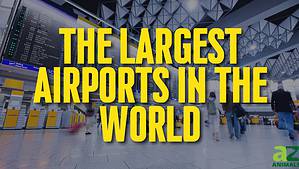How many countries in the world start with the letter “O?” Don’t rack your brain too hard. There’s only one. Can you guess it? It’s one of the lesser-known oil monarchies of the Arabian Peninsula, located strategically at the mouth of the Persian Gulf right across from Iran, and bordering the United Arab Emirates, Saudi Arabia, and Yemen. It appears to be at the center of everything but it doesn’t make the news all that often. In a lot of ways, it’s a hidden treasure in the region, where visitors can see the modern urban splendor oil wealth can create alongside some of the most beautiful unspoiled desert habitats and ancient villages you could hope to find. So if you’re ready to visit Oman, the only country that starts with O, you’ve come to the right place.
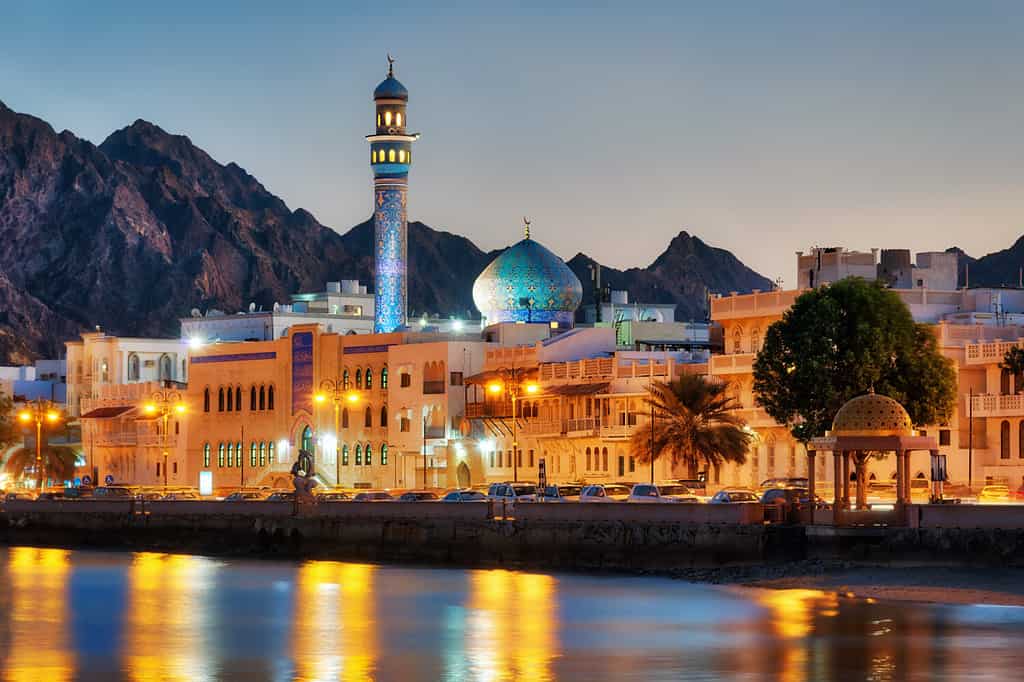
This is the Muttrah Corniche in Muscat, Oman – an extraordinary promenade watched over by an otherworldly-looking mosque.
©Lukas Bischoff Photograph/Shutterstock.com
History of Oman
Oman is the oldest independent state in the Arab world. In the 17th-19th centuries, the Omani Sultanate was a powerful empire that had influence and control extending into Iran and Pakistan and down the coast of Africa as far as Zanzibar in modern Tanzania. In the 20th century, the British Empire cooperated with Oman to help maintain British access to the Persian Gulf. Oman began a decades-long modernization program in 1970 when Sultan Qaboos bin Said took the throne. Among other things, he outlawed slavery, promulgated a new constitution, expanded voting rights, and invested in infrastructure and social services. The United Nations Development Programme ranked Oman as the most improved country in the world for the past 40 years. The country’s economy today is built on tourism, fishing, and agriculture, including dates, as well as the petrochemical industry.
Although Oman made impressive strides during his reign, Sultan Qaboos ruled as an absolute monarch, raising discontent among both progressives and Islamic fundamentalists. The 2011 Arab Spring uprisings that happened across the Arab world affected Oman but were disbursed by police, and restrictions were placed on the Internet, but the Sultan promised further political reforms. He died childless in 2020 and was succeeded by his cousin, Sultan Haitham bin Tariq. It remains to be seen what direction the new Sultan will take the country as he consolidates his political position and begins to realize his own vision.
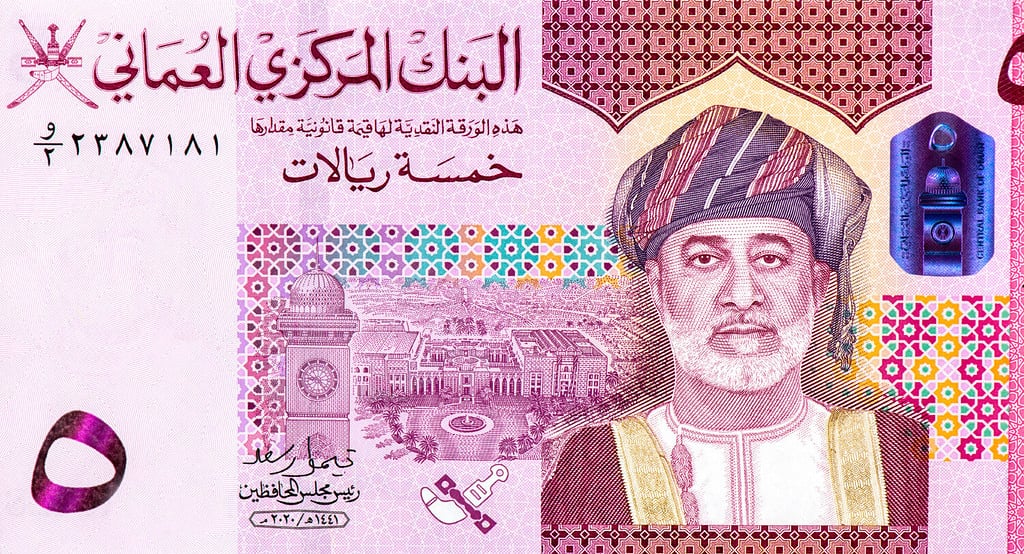
Haitham bin Tariq, here seen on a 5 rial banknote, is the current Sultan of Oman.
©Prachaya Roekdeethaweesab/Shutterstock.com
How did Oman Get Its Name?
There have been a lot of different suggestions to explain the name of Oman. It is probably derived from the name “Omana” in the writings of Pliny the Elder and “Omanon” in Ptolemy’s writings. Both of them were probably referring to the city of Sohar, a port city that was said to be the birthplace of Sinbad the Sailor in mythology. In Arabic, the words aamen or amoun refer to “settled” people, unlike the nomadic Bedouins of the desert.
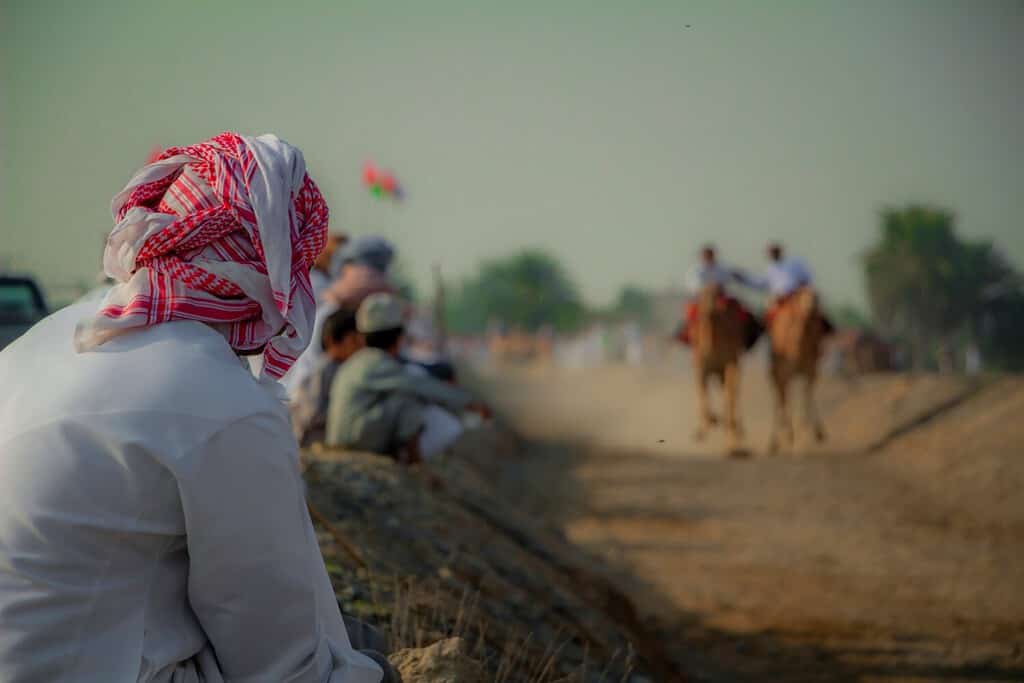
Spectators at an Omani camel race, a traditional bedouin sport.
©Samah Fathima/Shutterstock.com
Geography and Climate of Oman
Oman’s territory is mountainous in the far north and far south, but is a level gravel plain in the center. Plenty of seashells are there, far inland, showing that the area was once underwater. This region is also a good source of meteorites that have been well-preserved in the arid climate. Most of Oman is a hot and dry desert with humid areas running along the coasts. The population and major cities are clustered in the mountainous areas where the climate is cooler and the land is more fertile. Summer temperatures in Muscat and northern Oman average 86 to 104 °F, but temperatures as high as 129 °F have been recorded in the country, among the hottest recorded in the world. Muscat gets less than 4 inches of rain a year, but some parts of the coast get no rain at all most years.
The Dhofar Mountains in the south have cooler temperatures. In the city of Salalah, summer highs stay in the comfortable range of 68-86 °F. The area benefits from seasonal monsoon winds from June through September, which bring heavy moist fog in summer and give the area a tropical climate. Since ancient times Dhofar has been a source of frankincense, a resin used in perfumes and incense and most famous from the Bible as one of the gifts presented to the infant Jesus by the Magi.

The mountainous regions in the north and south of Oman provide better climate and soil conditions for agriculture than the barren central desert.
©Emily Marie Wilson/Shutterstock.com
Wildlife of Oman
Oman has native populations of leopards, hyenas, foxes, wolves, hares, oryx, and ibex. Among the major bird species are vultures, eagles, storks, falcons, Arabian partridges, and sunbirds. The country has quite a few endangered species, including the Arabian leopard, the Arabian oryx, two types of gazelle, the Arabian tahr, and three kinds of turtles. Oman had an area set aside as an Arabian Oryx Sanctuary, but sadly, reduced it by 90% when oil was discovered in the area. There are now only about 1,200 of these beautiful antelope remaining in the wild and 6,000-7,000 in captivity. Visitors have also criticized the country for its inhumane treatment of stray dogs and cats. There are no sterilization programs, and the only control method for strays is for police to shoot them. On a more positive note, Oman has become a popular spot for whale-watching. Species that can be spotted in Omani waters include the Arabian humpback whale, the sperm whale, and the pygmy blue whale.
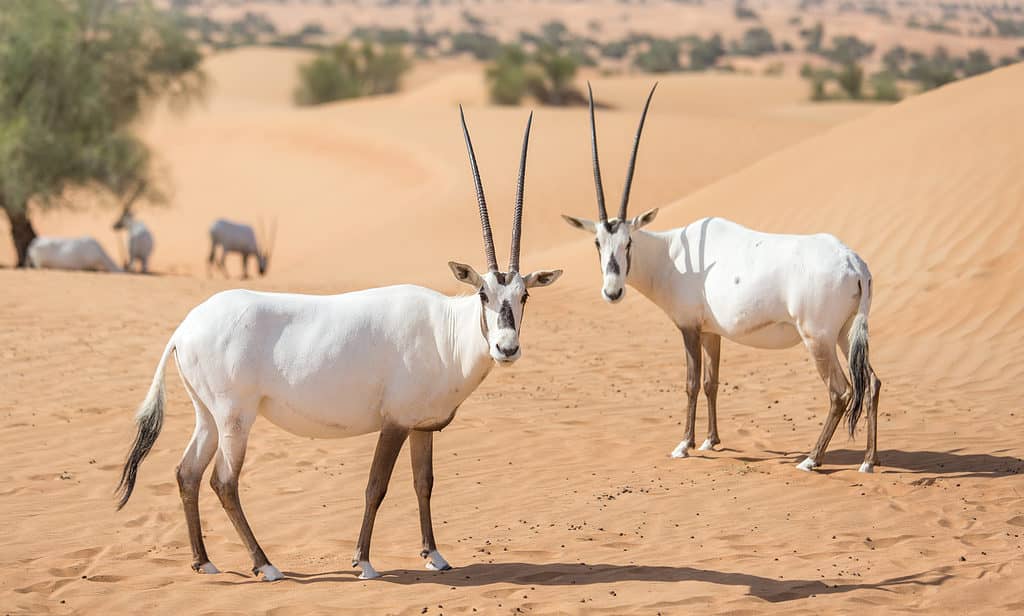
The Arabian oryx is a beautiful
antelope
with straight horns that is in danger of going extinct in the wild.
©Kertu/Shutterstock.com
Urban Life In Oman
If you visit Oman you’ll probably spend most of your time in its cities rather than out in the wilderness, so what can you expect to find? Let’s compare the largest city in the north and the largest in the south.
Muscat
This northern city is the capital and largest city in the country, with a population of about 1.4 million. The scenery in the city is dominated by the Hajar Mountains and the Arabian Sea. Muscat is a major port city for Oman and the rest of the region. Most of the city is built with low-lying white buildings. The city is full of picturesque mosques, but one of the largest and most popular is the Sultan Qaboos Grand Mosque. The Muhammad al Ameen mosque with its golden domes sits on a hill with nice views of the city. The National Museum and the Sultan’s Armed Forces Museum are two of the most comprehensive displays to learn about Oman’s history and culture, but you can also find smaller ones around the city. Bimmah Sinkhole is a beautiful natural formation in a nature reserve. Qantab Beach is a good place to go wading, fishing, and rock hunting. Swimmers, of course, should familiarize themselves with local dress standards before heading to the beach.
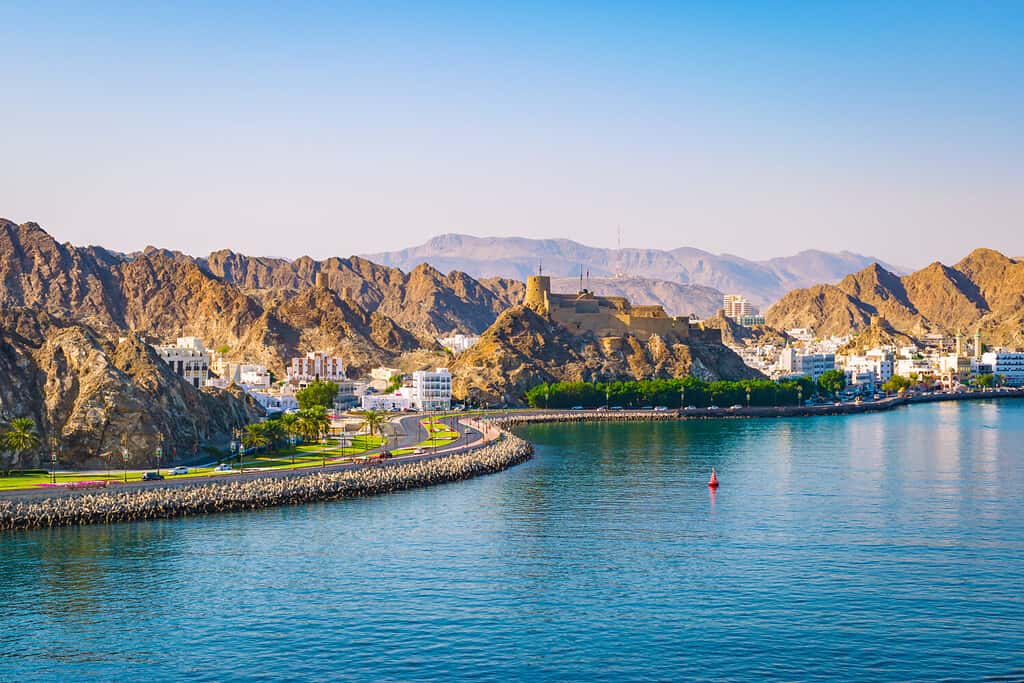
The gleaming white buildings of Muscat run along the coast with rugged mountains as a backdrop.
©NAPA/Shutterstock.com
Salalah
Salalah is the largest city in the southern Dhofar region, and the third-largest in the country as a whole. It is a popular destination for tourists from other parts of Oman and the whole Persian Gulf region during the summer monsoons when the climate is cool and foggy. The increased rainfall turns the surrounding mountains green and creates a lot of waterfalls. The city is full of gardens where residents grow vegetables and fruits, including coconuts and bananas. The city has a diverse population with a large number of expatriate workers from the Indian subcontinent and the Philippines. Salalah is important to some Muslims as the site of four tombs reputed to belong to Islamic prophets, including Job, whose story is also told in a book by his name in the Jewish Scriptures. The annual Salalah carnival is another popular event, with rides, concerts, cultural events, and street vendors selling food and souvenirs.
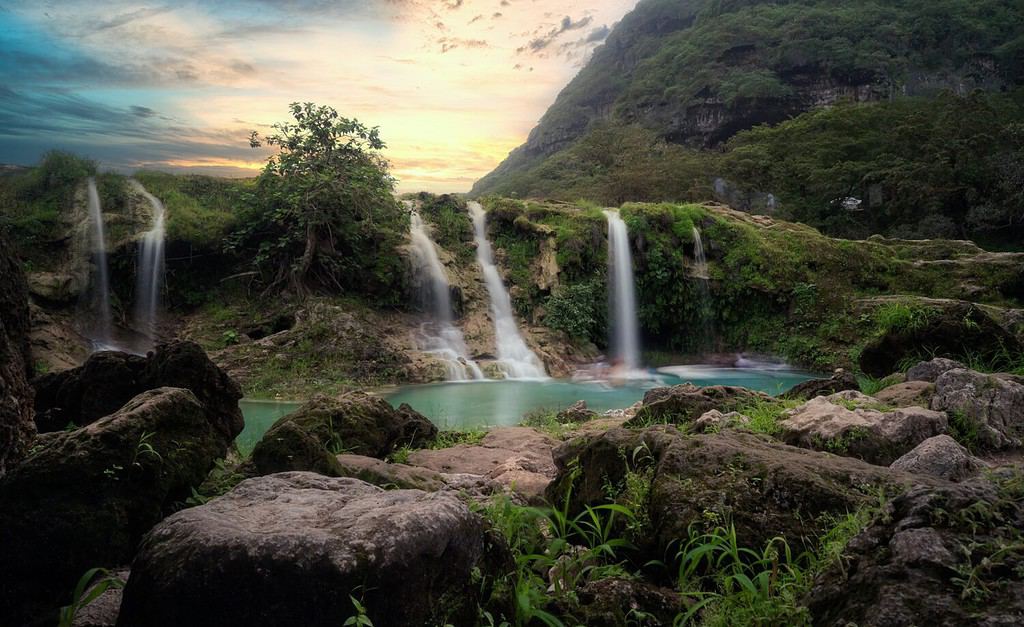
This is Wadi Darbat near Salalah during monsoon season. It’s easy to see why Omanis and international tourists flock to Dhofar for a break from the summer heat.
©HiAmir/Shutterstock.com
Unique for More Reasons Than Its Name
As you can see, there’s a lot more unique about Oman than the fact that it is the only country whose name begins with the letter O. Some of the hottest temperatures in the world have been recorded there, yet parts of it are a cool tropical paradise in summer. It’s in a dangerous and unstable region, yet it has enjoyed relative peace, stability, and modern development for decades. Though it is a Muslim-majority country, don’t be surprised to run into large numbers of people from India, the Philippines, and other parts countries there. Oman is full of surprises. And it’s waiting for you to come and discover more.
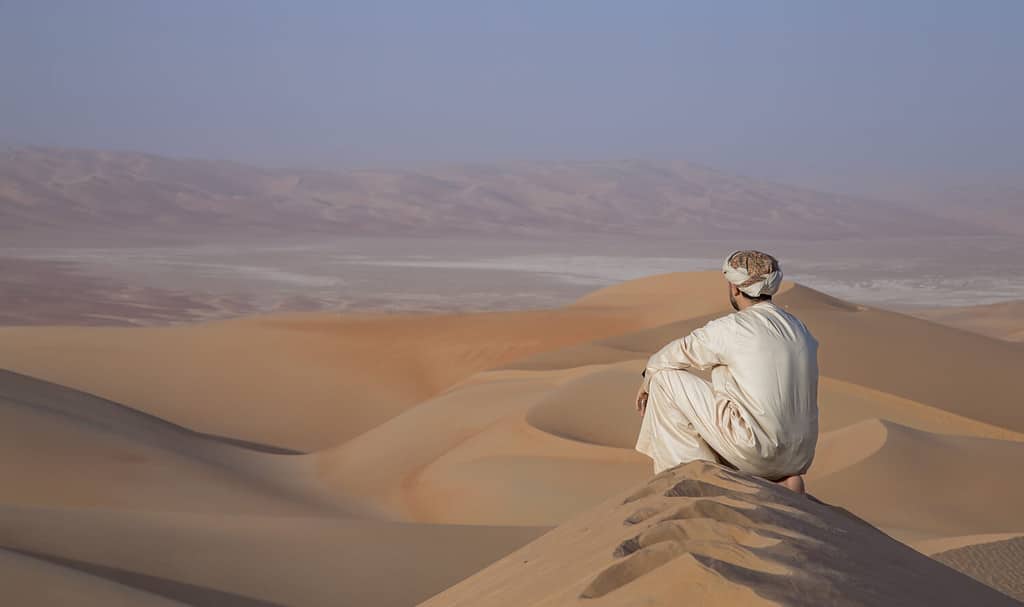
This man is wearing traditional clothing that helps him stay cool in the deserts of the Arabian Peninsula.
©Katiekk/Shutterstock.com
The photo featured at the top of this post is © Lukas Bischoff Photograph/Shutterstock.com
Thank you for reading! Have some feedback for us? Contact the AZ Animals editorial team.





